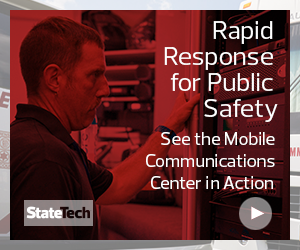How Public Safety Agencies Use Crime Data Analytics
Predictive policing can be defined as “the application of analytical techniques — particularly quantitative techniques — to identify likely targets for police intervention and prevent crime or solve past crimes by making statistical predictions,” according to a 2013 RAND Corporation report.
Police investigators are often tasked with hunting for and identifying groups of related crimes — crime patterns. “Investigators have historically built patterns with a process that is manual, time-consuming, memory based, and liable to inefficiency,” Evan Levine, the NYPD’s assistant commissioner of data analytics, and Alex Chohlas-Wood, former director of analytics for the NYPD, say in a February article in INFORMS Journal on Applied Analytics. “To improve this process, we developed a set of three supervised machine-learning models, which we called Patternizr.”
Patternizr, which the NYPD first deployed in December 2016, is a “decision support tool and recommendation engine that consists of a set of machine learning models” to make searching for crime patterns more efficient and effective, Levine and Chohlas-Wood note.
“As the amount of data available to law enforcement increases, the need to turn it into information and ultimately intelligence has opened the door to analytics tools, including some AI techniques, that can augment human decision-making for better outcomes,” Zak says. “Data ingestion and correlation through AI tools is helping to eliminate blind spots that have been exploited by criminals. The additional visibility and insights into the data enable humans to gain a better understanding of situations so they can make more informed decisions.”
Turn Unstructured and Semistructured Data into Structured Data
Unstructured data, or data that does not easily conform to existing data models and formats, fills police reports. Such data can include descriptions of assailants, what a victim did in response to a suspect’s actions, items that were stolen in a robbery and more.
“Machine learning models, after some training, can be used to automatically and quickly move through, label and categorize unstructured data,” TechTarget reports. “It’s not a seamless process, and it is still certainly expensive and time-consuming, but changing unstructured data to structured data is easier now than ever before.”
Patternizr is a key example of how law enforcement agencies are using machine learning and pattern recognition analytics to spot similarities in crime and help improve public safety. The tool takes a “seed” complaint, chosen by a police department data analyst, and compares this seed against the hundreds of thousands of recorded crimes in NYPD’s crime database, according to Levine and Chohlas-Wood.
With each comparison between a crime and the seed, the tool generates a “similarity score” that measures how likely it is that the pair of crimes are in a pattern together, according to the report. Once all of the similarity scores have been generated, Patternizr then ranks the pairs in descending order by similarity score and returns a list for the analyst to review.
The complaints most likely to be in a pattern with the seed complaint appear at the top of the list, according to Levine and Chohlas-Wood. After reviewing these ranked results, the analyst can then decide which complaints should be grouped together into a pattern.
The NYPD built the features on which each machine learning model of Patternizr relies from the information contained in complaints.
“A complaint contains a mix of unstructured text describing details of the crime and structured fields about the crime, including the date and time (which can be a range if the precise time of occurrence is unknown), location, crime subcategory, M.O., and suspect information,” Levine and Chohlas-Wood say. Unstructured text also comprises the suspect’s statements, victim actions, method of flight, premise name and property taken.
“We use this information to calculate the five types of crime-to-crime similarities used as features by Patternizr: location, date-time, categorical, suspect, and unstructured text.”
MORE FROM STATETECH: Find out how 5G network slicing technology can benefit public safety.
Run Data Through Pattern Recognition Algorithms
The NYPD incorporated finalized Patternizr models into the back end of the department’s Domain Awareness System, a citywide network of sensors, databases, devices, software and infrastructure. The NYPD worked with Microsoft on the DAS. “Originally designed for counterterrorism purposes, the DAS has been modified for general policing and is now deployed across every police precinct in the city and on the smartphone of every officer,” an INFORMS article notes.
The department processed all historical pairs of complaints in parallel in the cloud, against 10 years of records for burglaries and robberies and against three years of grand larcenies. That processing took nearly 20 days on approximately 1,600 cores. For new and revised complaints, similarity scores were calculated and updated three times each day. Each new or revised crime was scored against the entire body of crime data before it is incorporated into DAS for querying by users throughout the department.
Officers and analysts can access Patternizr through a custom software application, which is a part of DAS, on NYPD desktop computers, Levine and Chohlas-Wood say.
“To use Patternizr, an investigator presses a ‘Patternize’ button on any seed complaint to retrieve all available calculated similarity scores,” Levine and Chohlas-Wood say. “Investigators are presented with a rank-ordered list of results, from most to least similar to the seed, with 10 results displayed at a time. For each result, the distance, time apart, and algorithm calculated similarity score are all displayed.”
A map then displays the seed and similar results, and users can read a few important details about each complaint before choosing to examine the seed and resulting complaints side by side in full detail, according to the white paper. “The use of a ranked list, as opposed to a similarity score threshold, allows us to always display the most similar crimes; thus, the analysts always have a starting point for their analysis,” Levine and Chohlas-Wood say.
In tests on historical examples from New York City, the models perfectly rebuilt about one-third of test patterns and at least partially rebuilt approximately four-fifths of these test patterns.
Between January 2018 and July 2018, approximately 400 complaints per week were run through Patternizr. The tool notably helped nab a syringe-wielding drill thief, the Associated Press reports.
“The goal of Patternizr is, of course, to improve public safety,” Levine told the AP. “The more easily that we can identify patterns in those crimes, the more quickly we can identify and apprehend perpetrators.”
Levine and Chohlas-Wood argue that Patternizr is “a new, effective, and fair recommendation engine deployed by the NYPD to help investigators group related crimes” and claim it represents “the first time such an algorithm has been deployed to production in a law enforcement environment.”
Pattern Recognition Software, Predictive Analytics Help Public Safety
Chicago is working with technology from Microsoft and Genetec, a Canadian firm, and from its Strategic Decision Support Centers, which have spread through the city’s police districts. The centers include surveillance cameras, gunshot detection platforms, predictive mapping and data analytics, Government Technology reports.
Public safety and law enforcement agencies can take advantage of multiple Microsoft technologies to run data through pattern recognition algorithms and predictive analytics tools, Zak says. They include SQL Data Warehouse, Azure Databricks, HDInsight, Data Factory, Azure Stream Analytics, Azure Data Lake, Azure Analysis Services, Event Hubs, Power BI and its machine learning offerings.
“Leveraging these types of data analysis technologies helps officers and agencies to identify crime trends as they evolve, allowing law enforcement leadership to reallocate resources and work with community leaders and organizations to identify broader challenges and work towards creating effective resolutions,” Zak says.
Predictive analytics tools also “increase the situational awareness of officers assigned to a certain district/beat/patrol area and improve the overall operation efficiency of a law enforcement agency,” Zak says.











